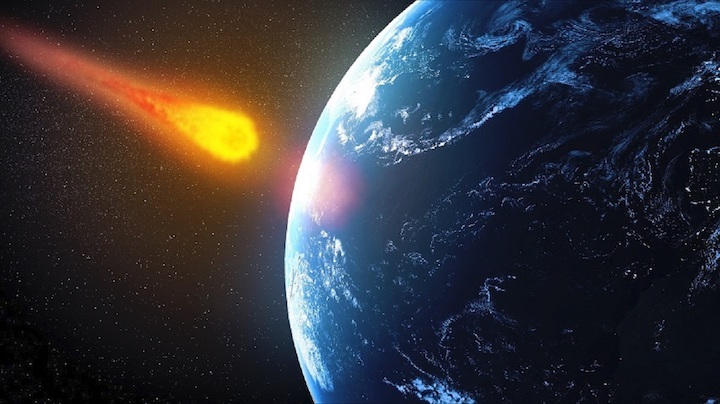9.09.2020

Asteroids that formed far out in the Solar System appear to contain dust grains that themselves condensed from the infant Solar System’s protoplanetary disc much closer to the Sun, scientists say.
That means this dust was somehow transported from the inner reaches of the disc to its outer reaches, says Curtis Williams, a geochemist at the University of California, Davis. Once there, it mixed with material that condensed from that part of the disc to form larger objects that eventually became asteroids.
In a study described in the journal Proceedings of the National Academy of Sciences, Williams and a team of US and Japanese researchers found these dust grains in a type of meteorite known as carbonaceous chondrites.
Such meteorites are chips off asteroids that have been blasted into space by collisions, only to eventually fall to Earth, where they can be examined in laboratories.
Previous studies had found that rocks from Earth and Mars, as well as asteroids like Vesta, which formed in the inner Solar System, are built of materials with a different array of chemical isotopes than those from asteroids known to have formed farther out in the Solar System.
Based on that, scientists had assumed that inner Solar System dust – which is different from outer Solar System dust because it condensed in hotter regions closer to the Sun – did not mix with outer Solar System dust. Instead, they assumed, it remained relatively close to the Sun.
The reason for this separation, they assumed, was the formation of the giant planet Jupiter, whose enormous gravity created a gap through which dust could not migrate. This, they assumed, divided the young Solar System into two distinct parts.
In the new study, however, Williams’s team delved into 30 carbonaceous chondrites and looked at their individual components. “They have microcomponents, called inclusions,” Williams says.
Looking carefully at isotopes in these sand-grain-sized inclusions, he says, his team found that some formed in the outer Solar System, but some must have formed closer to the Sun, then migrated outward before accreting into a larger body.
Since Jupiter is believed to have already been present at the time these grains dispersed, Williams says, “that has big implications. Either Jupiter was not a complete barrier, or these particles somehow jumped over Jupiter and landed in the outer Solar System.”
It’s an important finding partly because it will help planet-formation modellers better understand how dust grains migrate around a protoplanetary disk – including one in which giant planets are forming – before being incorporated into larger objects.
But it will also help modellers figure out important aspects of conditions in these protoplanetary discs, including the viscosity and turbulence of their gas and dust.
“That plays a role in how you build planets,” Williams says.
Quelle: COSMOS
